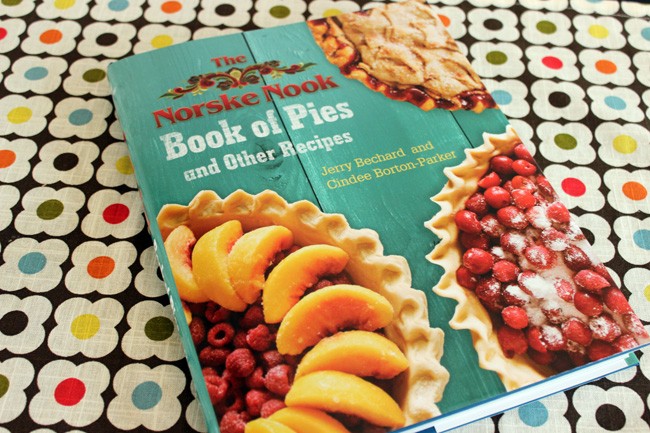
Some thoughts I had while making a pie crust from the new Norske Nook Book of Pies and Other Recipes (University of Wisconsin Press, 2015, $29.95):
“Really? That doesn’t sound right.”
“No way.”
“Well, maybe they know something I don’t.”
“What’s the worst that could happen?”
“Might as well see this through.”
“By gum, it’s working.”
“Well, sort of.”
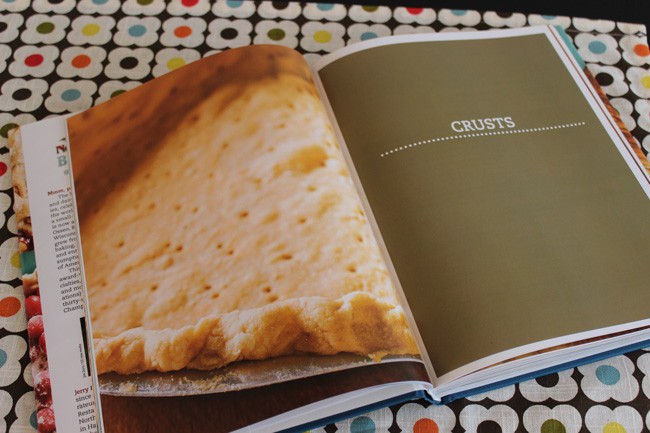
Behind all this mental drama was the peculiar (I thought) ratio of fat to flour and the absolutely insane directive to roll a dough made with one cup flour into a double crust (Let’s italicize that: a double crust.) for an 11-inch pie.
I have baked a lot of pies in my life, but I haven’t baked from a lot of different pie crust recipes. I started with the ratios on my mother’s Tupperware rolling mat — you know, the one with the circle templates printed right on it. The double crust recipe (for a 9-inch pie) called for an easy-to-remember 2 cups of flour, ⅔ cup of shortening, and as few icy tablespoons of water as you could use to bring the dough together.
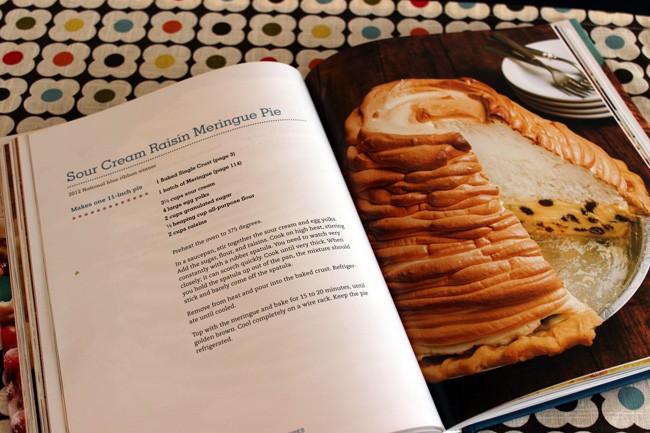
In adulthood, I checked this ratio against my handy Joy of Cooking (2 cups flour, ⅓ cup butter, ⅓ cup shortening, 5 tablespoons water) and never looked back. Well, sure, I switched to all butter — because who keeps shortening around anymore? — and I flirted with adding vodka to the water, but I figured the ratio was the ratio, and what really mattered was icy cold equipment and a light touch.
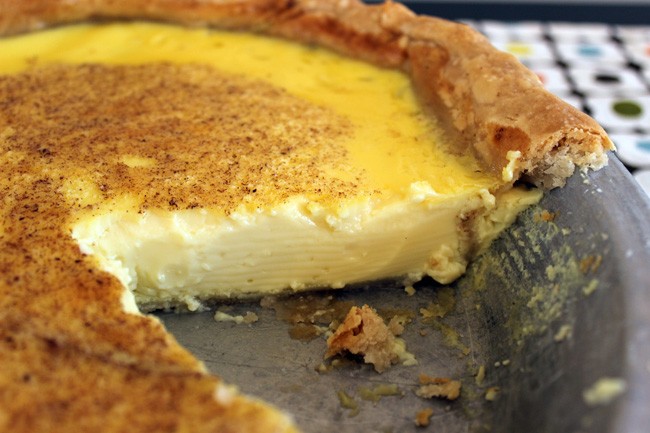
So, here’s the Norske Nook, cherished pie purveyor of Western Wisconsin, telling me blithely to use my fingertips to blend ½ cup butter-flavored Crisco with 1 cup of flour, then add ¼ cup water and “mix until smooth.” What? I put the resulting goopy mess in the fridge and did some research.
Sure enough, Cook’s Illustrated’s The Cook’s Bible calls a fat-to-flour ratio of 1:2 (much higher than the 1:3 I was used to) “the secret to a flaky crust.” But their recipe uses far more butter than shortening and only 2-3 tablespoons cold water per cup of flour.
The real mystery was how that tiny, goopy blob in my fridge was going to roll into two (two!) 11-inch crusts. But, I figured, “in for a dime in for a dollar.” So I rolled. And I rolled. And I cursed. And I rolled. And by the time I was finished rolling, that pie crust was translucent, but, by golly, it filled an 11-inch pie tin. After blind baking, I pulled the empty crust out of the oven and — hallelujah — no shrinkage, no puffing, even browning. I could no longer read the print on the bottom of the pie tin through it. It looked good.
Then I accidentally brushed my thumb up against the edge and it just shattered: That thin crust was brittle and fragile after all.
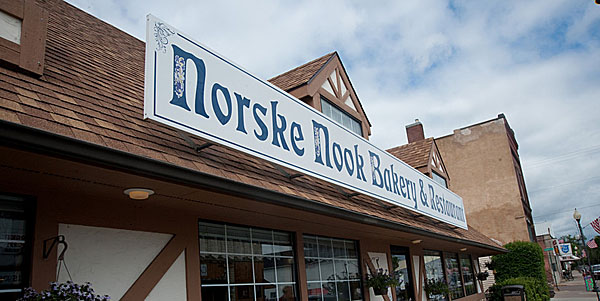
Baking from the Norske Nook’s new cookbook needn’t be such a drama. Just use your own favorite crust recipe. (Or borrow the one from my mom’s Tupperware rolling mat. You’re welcome.) In the book’s introduction, author and Norske Nook owner Jerry Bechard describes his own first months in the kitchen, when he had just purchased the beloved Osseo diner from founder Helen Myhre. He made pie after pie, day after day, while the long-time bakers in the kitchen would give him pointers and a little bit of good-hearted grief for his efforts.
Bechard’s book is the second Norske Nook cookbook. Myhre herself published Farm Recipes and Food Secrets from the Norske Nook in 1993. While Myhre shared her secrets for savory dishes as well as her famous pies, Bechard sticks to sweets. The Norske Nook Book of Pies, beautifully illustrated with full-bleed photos on nearly every spread, includes about 75 pie recipes — many of them variations on a theme — and about half that many tortes, muffins, cookies and Scandinavian specialties. There are classic fruit pies and there are Cool Whip-based cream pies and pies that rely heavily on flavored Jell-O. And there are a half dozen truly underappreciated sour cream pies. (The world needs more sour dairy products.)

And then there are the stunt pies: The eight-inch high beehives of meringue, bronzed and proud. Fifteen egg whites are beaten with sugar to make a good gallon of meringue topping for a single pie. Those are the ones that were calling to me. I made the Sour Cream Raisin Meringue Pie and — to use up all those extra yolks — the deceptively simple and homey Custard Pie, one of Norske Nook’s many winners in the National Pie Championships.
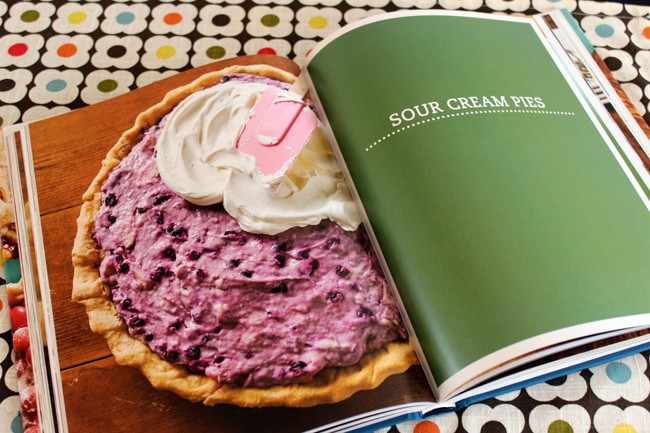
Both pies were a success. The plain custard pie was like silk, getting its flavor entirely from 14 egg yolks, a little vanilla and a little nutmeg. The sour cream raisin custard was sturdy and tangy, properly peasant-like next to its elegant cousin. And when I pulled the golden-brown ship of meringue out of the oven, I felt so accomplished. Like I could just shut down the kitchen for the day and rest on my laurels.
But once on the plate, the crust on both pies just completely disappeared. It was flavorless on the edges and barely detectable on the bottom. As a firm believer that the crust can be the best part of the pie, I just didn’t see the point. All that drama was for nought. I’m going back to my old Tupperware ways.


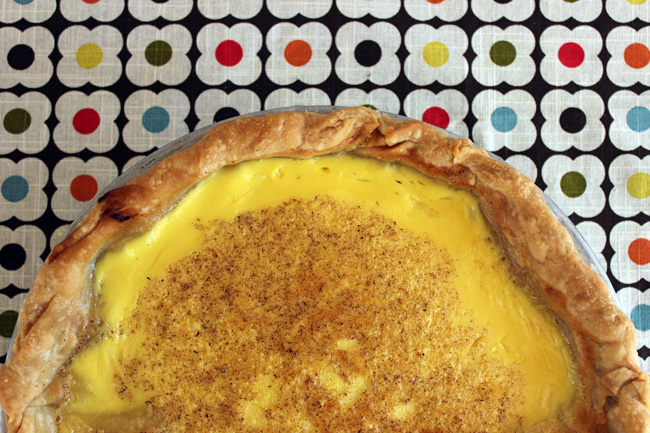
Have you checked with the authors asking if it is a misprint? I bought Thomas Keller’s Ad Hoc when it first came out and there was something in a technique that made no sense to me. But I couldn’t imagine the perfectionist team of Thomas Keller and Michael Ruhlman letting an error slip through. Finally I have in and emailed Michael Ruhlman and asked if this was a mistake in the book, and it was.
Or maybe this recipe works with those automatic pie dough rollers, but not so well for home cooks.
The best pie crust recipe I’ve come across is in The Hoosier Mama Book of Pie.